Polymer clay can be rightfully called a new generation plasticine. This is absolutely harmless, plastic and relatively inexpensive material for creativity. Due to the very soft and homogeneous texture of it, you can cut almost anything. The polymer clay "Cold porcelain" is hardening when frozen, and crafts look very natural. The modeling from the "Cold Porcelain" can be an excellent hobby for the whole family.
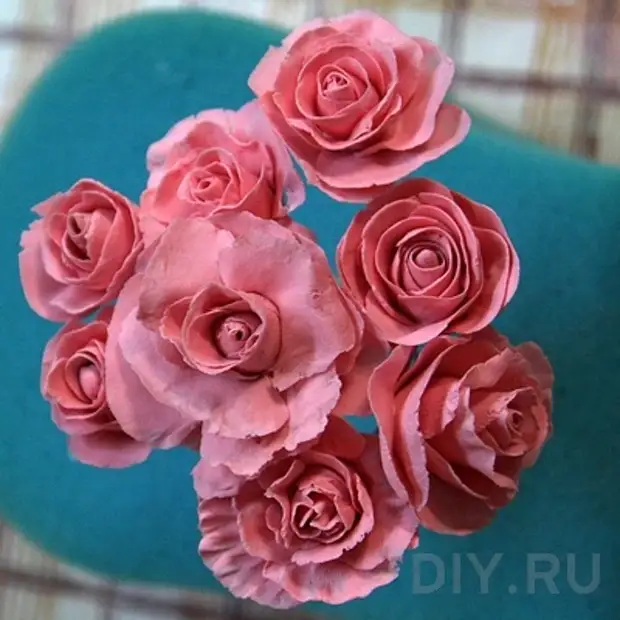
We offer you a relatively light master class. Cold porcelain is not the material from which it costs to immediately try to create complex things with a lot of small details. We will introduce you to the technique of modeling colors from polymer clay on the example of one rosette, which can be used as a hairpin or brooches.
What materials will require our master class:
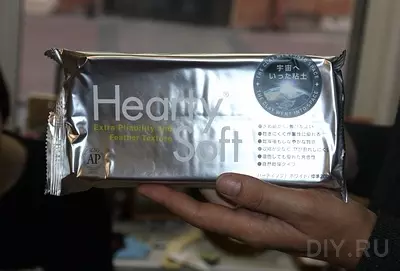
- "Cold porcelain", it is a polymer clay;
- Teip-tape (floristic, with light adhesive effect) for the design of the stem;
- Floristic wire;
- PVA glue;
- Food film;
- Dye for polymer clay (red and green).
Required tools:
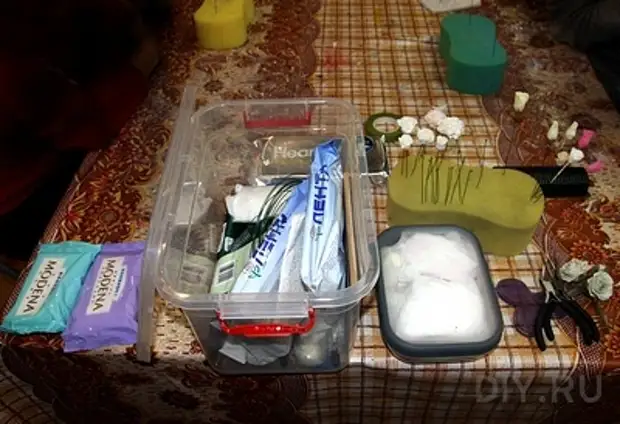
- Stacks No. 3 and No. 3.5. Instead of stacks, you can use wear knitting needles;
- Pliers;
- You can also use moldes (forms) for sheet prints;
- Thorough sponge.
Polymer clay flowers
1. We tear off a piece of clay from the total mass, kneading, stain in a gentle pink color. Single, so that the dye spreads uniformly.
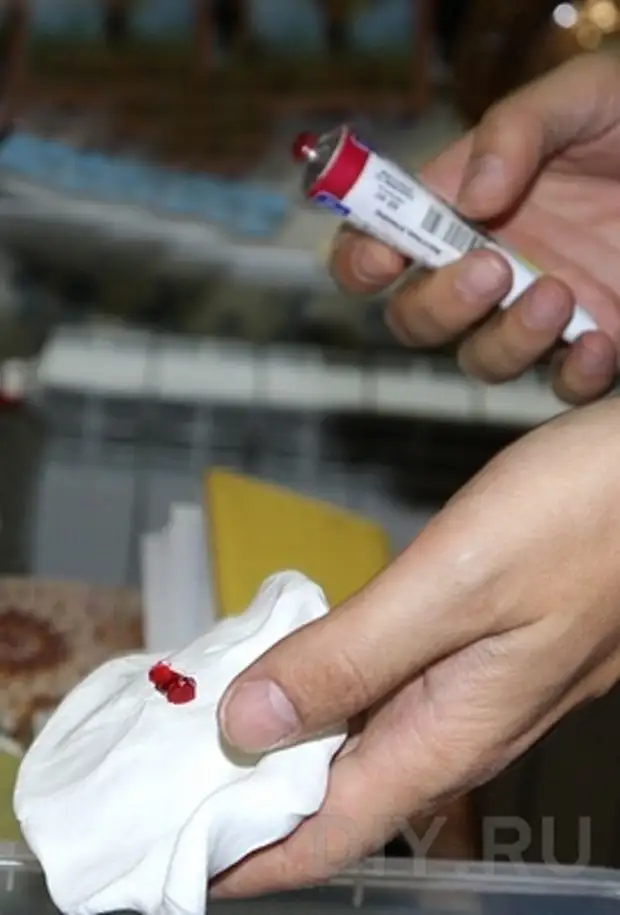
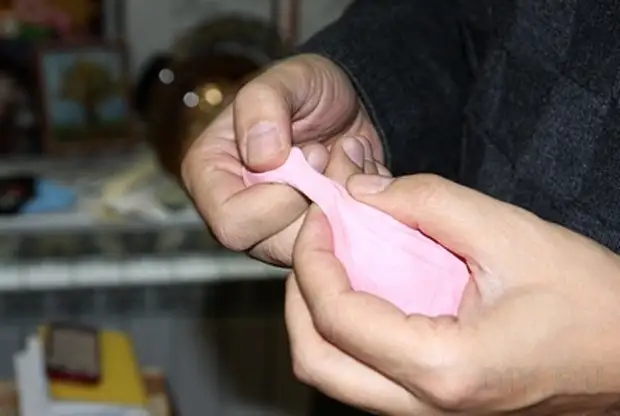
2. To get a more natural shade, you can make the so-called dilution of color. To do this, take pieces of painted clay and each of them mixes with white.
3. Watch the resulting mass in the edible film so that it does not dry.
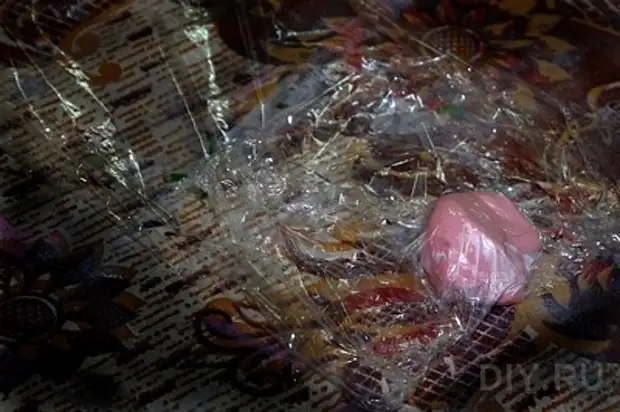
4. Plug off the painted mass of a small pea and rub in the fingers, Macham in PVA glue and plan on the wire.
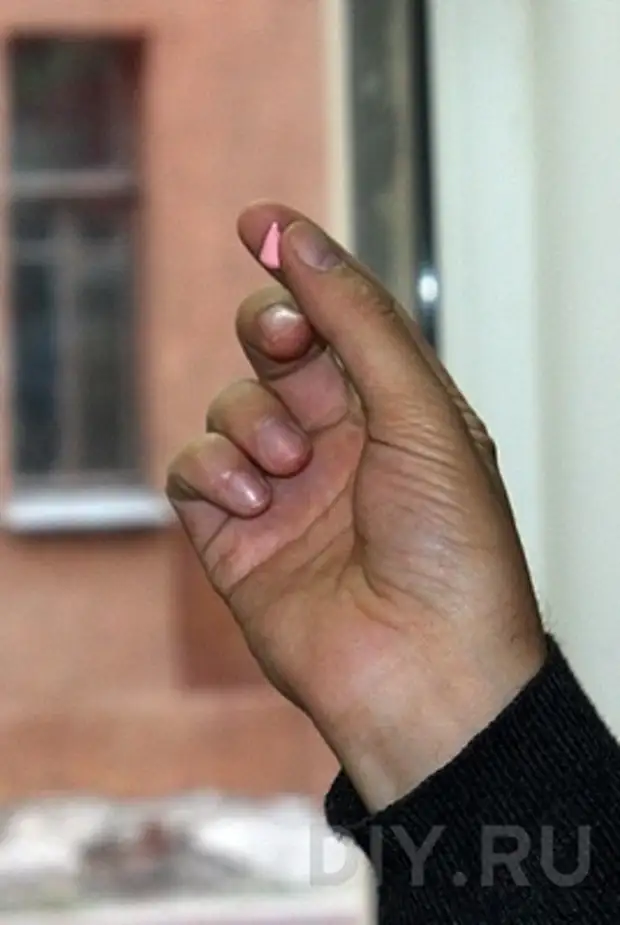
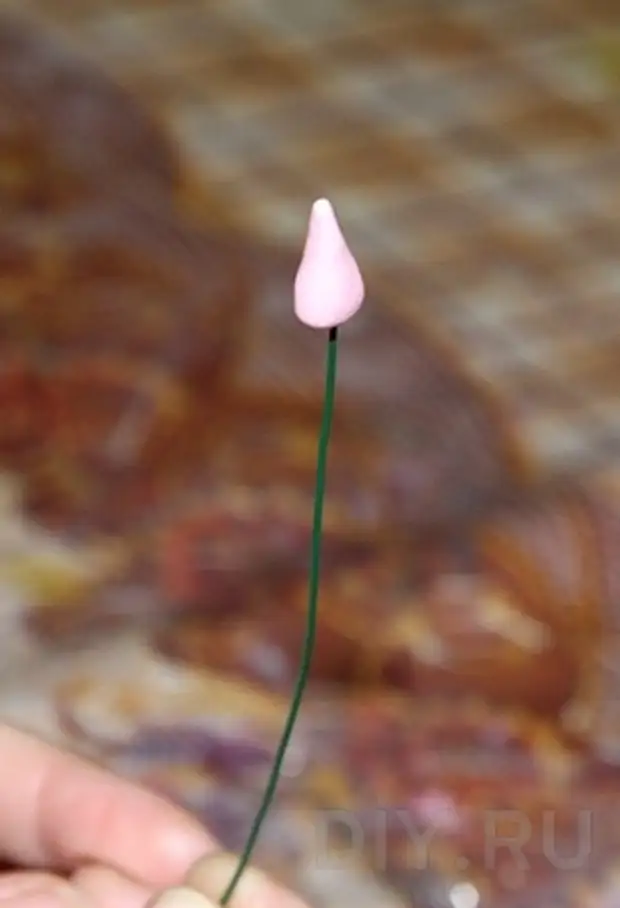
5. Plut another skirt, put on the palm. We take knitting needles or stack and roll out as shown in the photo. The petal should be very subtle, transparent to the lumen.
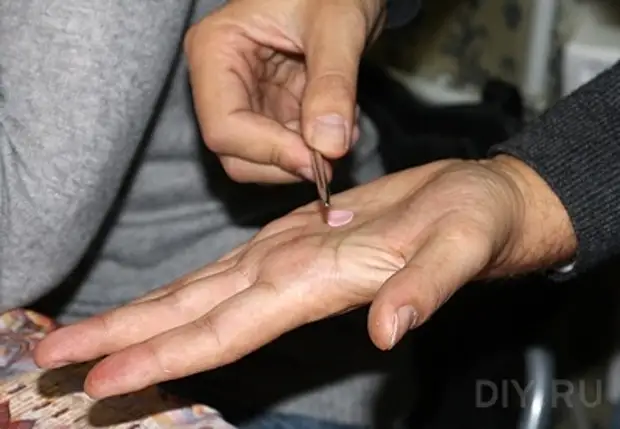
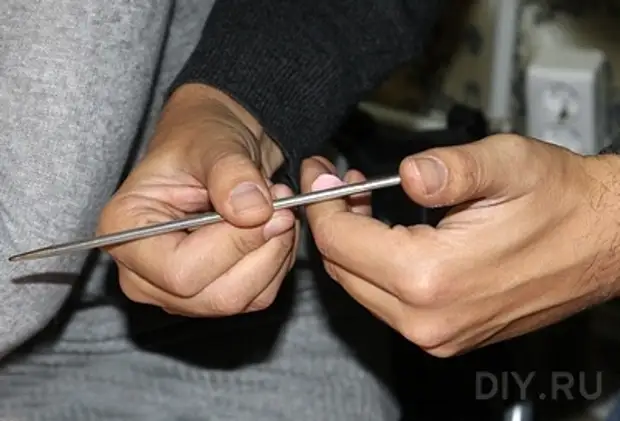
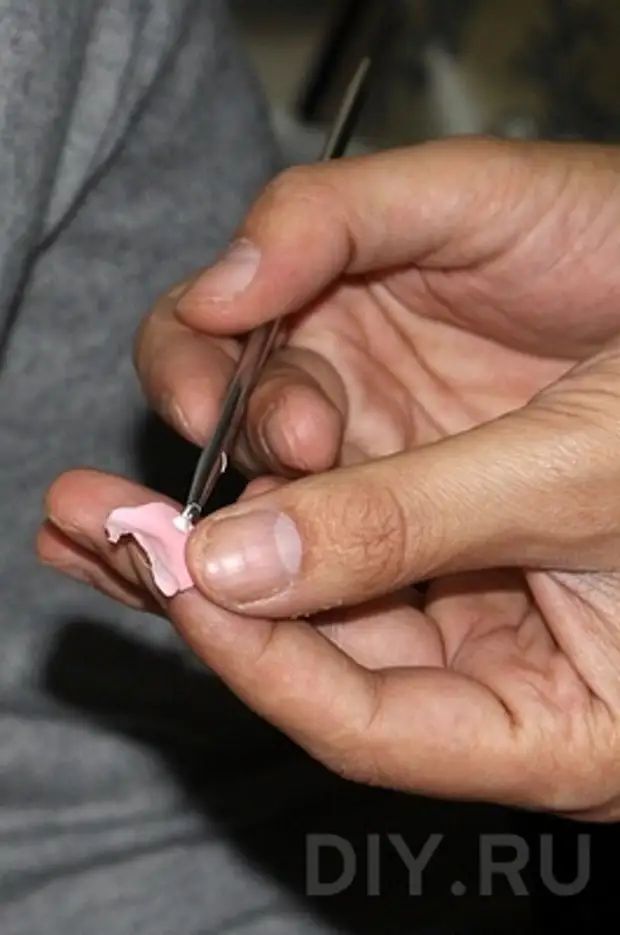
6. On the basis of the resulting petal Drip PVA and plan it on a wire, forming a cone.
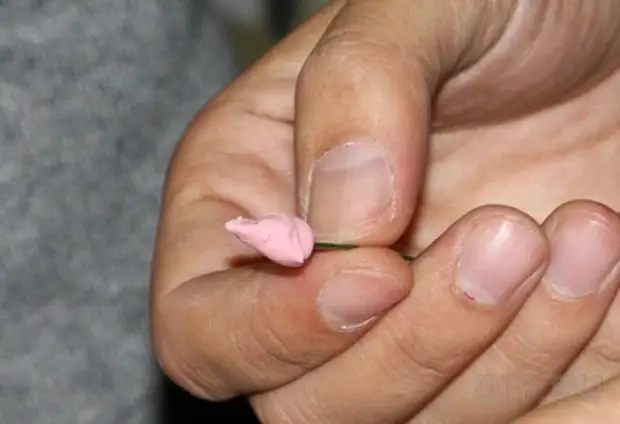
By analogy, we make two of the same billets, wrap in the croke.

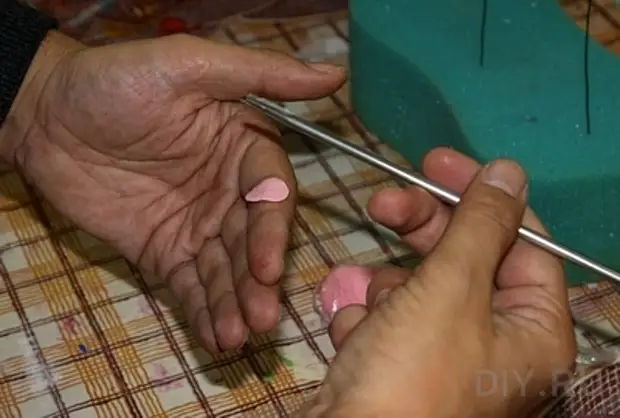
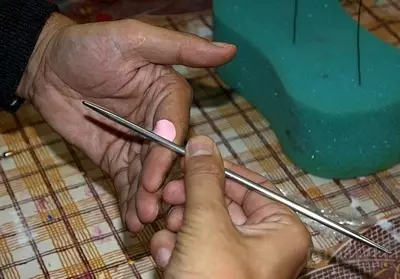
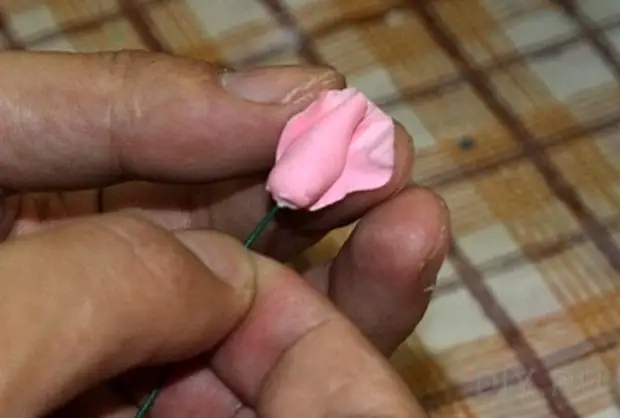
Watch that the petals are on the same level. The middle of the next billet should be where the previous one ends. After the third petal is glued, you can start opening the flower.
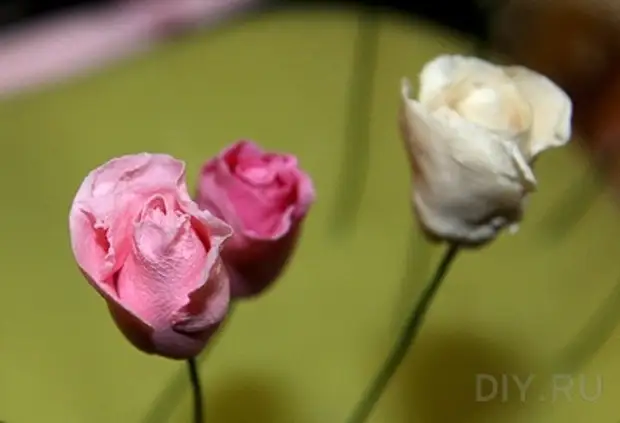
7. We continue to form petals. Roll over clay mines by fast, confident movements. To the edges obtained by wavy, we lead along it with a stack with a slowdown.
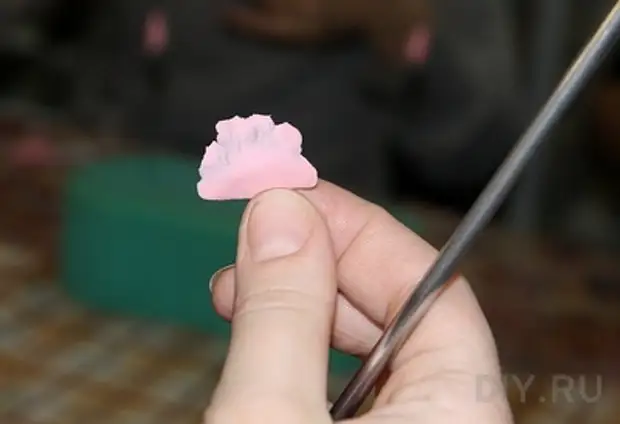
8. The resulting fourth leaflets attach strictly vertically.
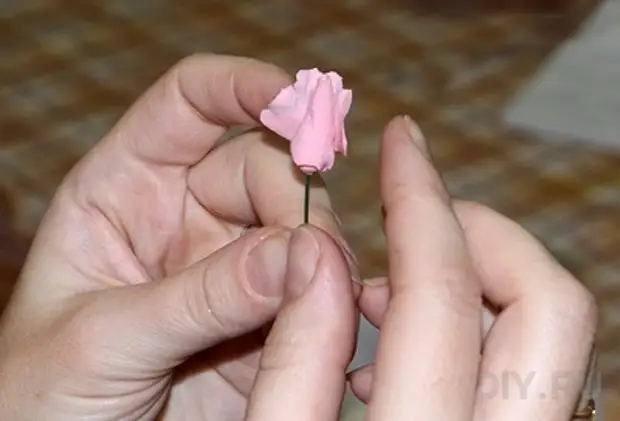
9. By analogy, we roll out the other details, fastened to the base. Watch that the petals are located at one level. Rosette can be increasing until the flower becomes round in cross section.
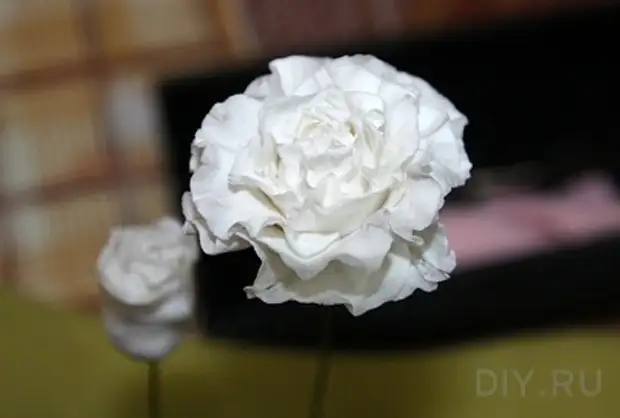
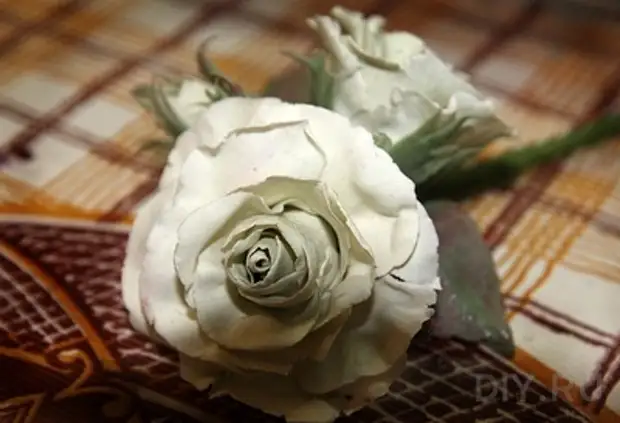
10. Made 6-7 petals? Crush the flower from below, thereby giving it to reveal.
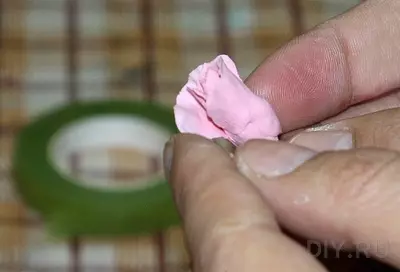
11. The lateral decoration of the flower ideally is made of softer clay. Color the required amount of material in green. Out off the piece of clay and give him an outdoor drop. Candle with manicure scissors.
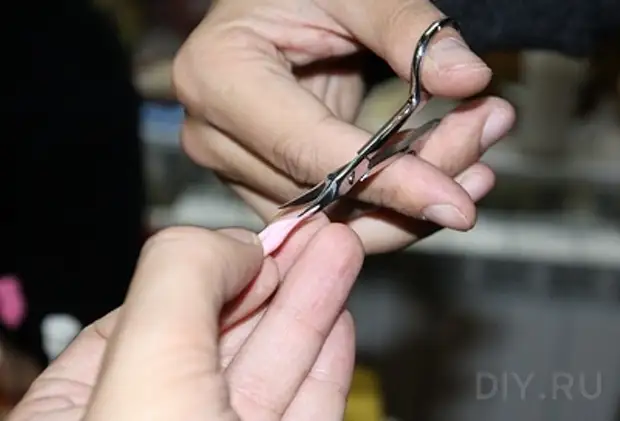
12. The stalks are wrapped with a tape-ribbon, carefully fasten it at the base.
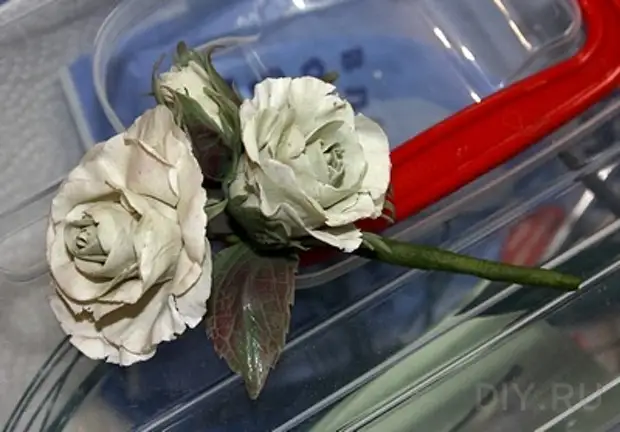
As you can see, the modeling of flowers from polymer clay is not difficult.
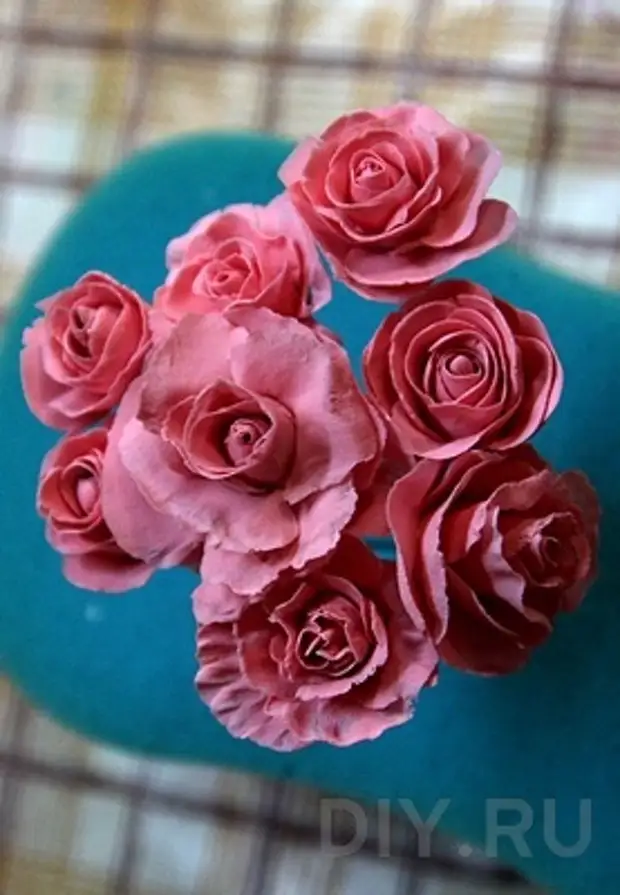
Having achieved a certain level of skill, you can, for example, create flowers from cold porcelain, practically not distingurable from the present.
A source
